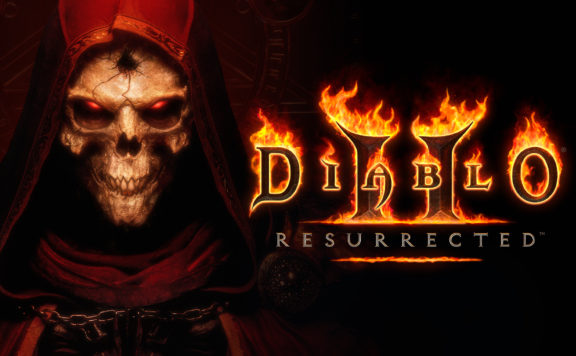IXION is the kind of game that can keep you busy for a long while, providing a wide range of emotions and forcing you to use some of that brain juice to keep things afloat. Coming from Bulwark Studios (Warhammer 40,000: Mechanicus), it focuses on survival of a space station while mankind falls apart.
IXION features standard city-builder gameplay mechanics: resource management, limited spaces for building, etc. However, it also gives players a chance to explore certain star systems, even if in a limited fashion. Altogether, the game is more of a story-driven adventure rather than your usual sandbox farming sim and features several lengthy chapters to play through.
Without further ado, this is our IXION PC review. Continue onward for more details on the plot, gameplay and aesthetics.
The events of the game take place in the world of the future where humanity is striving to reach the stars. The plot offers a lot of dramatic, interesting and exciting twists and turns. Sometimes it might even make you think about some aspects of our current era. Additionally, IXION features a number of references to various books, movies and even mythology.
As the player, your goal is to ensure the survival of the space station as well as to find a new planet suitable for colonization. To do this, you will have to build infrastructure, research technology, solve a variety of problems that are just waiting to appear, carefully manage resources and workers and tackle many other things.
The game will not give you a peaceful minute to breathe, spending the entirety of your time on fixing numerous problems, developing the station or exploring space. The early game might have a leisurely pace but it is easy to manage: IXION has an option to accelerate time which helps out with the slower start and ensures there is no need to wait for building or research for too long.
The game features a variety of resources that need to be carefully handled. Mismanaging some resources can easily bury your hours-long game in a matter of minutes.
Building resources are divided into two categories: raw materials and processed resources. For example, Iron Ore is smelted into alloys, Silicon gets turned into microcircuits, Carbon can get transformed into plastic. Each resource is stored in the warehouses that also require certain management. You can manually switch the resource associated with a particular warehouse, alas, there will not be enough space for everything.
The station is split into 6 sectors that have limited space for construction. At the beginning, you have access to only one sector that is used for you to undergo training and take your first steps. Gradually, other 5 sectors will open once you have enough resources and workers to fulfill the criteria. Each sector has its own resources which must be assigned to the warehouses, population and workers. Resources and population can be moved between sectors.
The distribution of resources has its own sub-menu that allows you to fine-tune all the aspects of the process, set up where, what and how much resources will be sent. The population is distributed in a similar fashion, with the actual move requiring a bit of time. Micromanagement is an important part of the game, the survival of humanity literally relies upon it.

Another important part of the overall management is keeping up with the repairs of the station’s hull. The hull wears out constantly and loses a chunk of its durability during the move of the station, so you have to be on top of it. It constantly consumes a set amount of alloys to carry out the repairs by the gateway workers. The more sectors you have opened, the more resources you need.
The building process is carried out by the construction shop robots that also pave roads, move resources between warehouses and deliver them to the building sites. You have to prioritize during construction because there are only 5 robots per workshop. It is important to plan the placement of the roads and buildings very clearly since the space is quite limited. In order to move buildings to another place, you will first have to destroy it, collect the resulting resources, shuffle them around warehouses and only then construct it in the new place.
Buildings have certain specializations such as being assigned to categories like food, population, space or industry. The more buildings of the same type in one sector, the bigger are the bonuses to that specialization. The main point of this division into sectors is to create a synergy of various specializations across the station.
The population of the station also plays an important role as you need to get new people out of the cryo capsules that can be found while exploring space. Cryo capsules are also a special resource that can be used by a specific building meant to defrost them. Each one of those capsules gives you an extra settler that will become a worker, a colonist or some idle lazybones skulking about. Every enterprise, factory or building needs workers, if there are not enough people then the active population will be forced to work extra which will affect their health and the overall building performance. Buildings are capable of breaking down, catching fire or simply turning off, so keep an eye on that!
The population requires food, and needs to be fed once every 5 cycles. Usually it is enough for the crops to grow, be harvested and delivered to warehouses and canteens.
Another extremely important resource is the Energy. You will never have enough to keep everything going smoothly, even after the construction of all the solar panels. It will prompt you to turn buildings off and on again, build batteries to store energy and survive. In case of energy overrun, certain buildings will get shut down and the discontent of people aboard the station will grow.
Space exploration is all about finding certain points of interest: scientific discoveries, new planets and asteroids filled with resources. You will have your own mining, transport and research ships to manage.
Separately, you will also have probes that can be launched on the planetary system map. It will lead you to a nice little menu with various indicators which will help you determine what kind of resources there are and where they can be found. Probes are also used to search for planets and points of interest. Overall, the system reminded me of Mass Effect 2, down to the planet scanning.
Once a ship is built in the cargo hold, you can send it out on a mission. Scientific ships go to planets to get some science points and conduct expeditions. Mining ships extract resources from deposits so that cargo ships can collect them and transport them to the base. While science ships follow your manual pinpoint orders, mining and transport ships operate in a semi-automatic mode.

As you progress through the game, you will discover new technologies that will make your life easier, improve production, etc. You will have access to 4 total levels of technology tree.
To get to the more advanced technologies, you might first have to research the related basic tier. There are a few ways to acquire scientific points: they are generated by the research building itself and received when studying planets and doing certain events.
The game has three types of events: the station events, space events and the global ones that affect the stability. The events themselves are not very diverse or complex. Sometimes they can be funny or ironic, sometimes a bit weird that makes you go “how did we get here”. The nature of those events is to meet a certain condition within the specified time period lest you want your population’s trust level to suffer.
Every space event (the expeditions of the scientific ships) are fascinating to read and take part in. Those particular ones can be praised for the elaborate details in the text as well as choices that lead to different outcomes. It might be beneficial to pay attention to the text, especially to the colored part of it, in order to understand subtler points and avoid making a mistake. There are some tricky events where misunderstanding the text might lead to the demise of your entire expedition team. Some also require special technologies like the exo-skeletons to perform certain actions.
When it comes to graphics and sounds, the game is a pleasure to follow. From watching your everyday construction to space exploration and more. The music adds to the atmosphere and keeps you in the state of a light tension, perfectly fitting certain moments of the game. Certain tracks might give you chills and keep you invested for hours on end. My first successful playthrough took a bit over 20 hours, and I couldn’t turn the music down through the entirety of it, even to get the appropriate achievement.
However, when it comes to the technical part, the game can get a little frustrating: lagging, long loading screens, occasional crashes and more. Thankfully, auto-saving will likely keep you from losing too much progress. IXION could use some help with optimization, I had to wait for the final cutscene for a few minutes, just staring at the loading screen.
Overall, IXION offers nothing new. Players will get through the good ol’ survival and management mechanics that we have all seen around. However, it is still addictive due to the competent combination of those elements as well as interesting execution and catchy aesthetics.
If you like sandbox games and have a certain degree of yearning for space themes and good stories, I hope you pay attention to IXION. It will pull you in for many hours, filled with awe and wonder at the atmosphere of the game.
Similar to: Frostpunk






